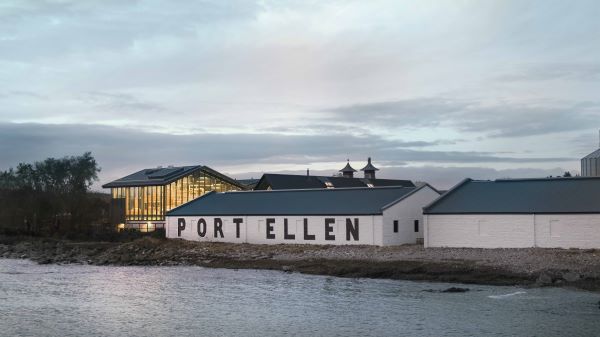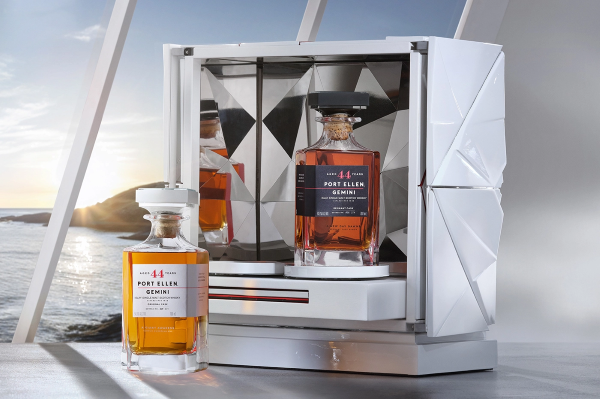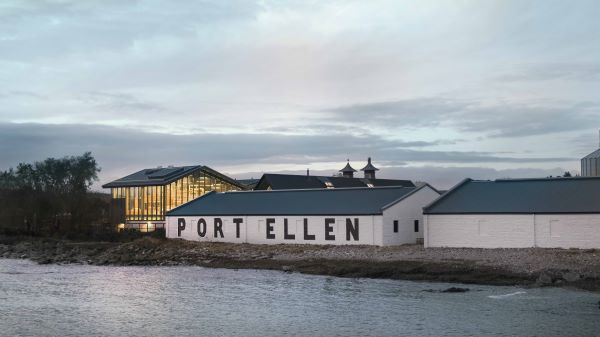Port Ellen: A Phoenix from the Ashes
The legendary 'ghost' distillery of Port Ellen has reopened amid much fanfare, more than 40 years after its stills had fallen silent, apparently for good. The Islay single malt's rollercoaster saga says much about the changing face of Scotch whisky, as Richard Woodard discovers for WhiskyInvestDirect…
Wednesday, 16 February 1983 – Ash Wednesday, aptly enough – was a black day for Scotch whisky. Distillers Company Ltd (DCL), the corporate precursor of Diageo, announced that it was axing 530 jobs, closing 11 malt whisky distilleries and one grain plant. The shock news came only a fortnight after the company outlined plans to shutter its Haig blending plant in Fife, with the loss of another 320 jobs.

The 'whisky loch', created by a combination of over-production and global recession, was threatening to drown an entire industry. And among those who lost their livelihoods were the 17 people employed at Port Ellen distillery on Islay.
Viewed through the lens of today's market, in which Port Ellen's famously smoky, oily, aged whiskies are liquid icons that change hands for many thousands of pounds a bottle, the closure of the plant looks at best like commercial stupidity, and at worst like an act of cultural vandalism.
On the surface, this assessment is given more weight by the events of the recent past. In 2017, Diageo announced that Port Ellen would be reopened – or, more accurately, rebuilt, with a new stillhouse and fresh stills and other equipment, part of a £185 million investment that included reopening Brora in the Highlands, building new visitor centres in distilleries across Scotland, and creating the Johnnie Walker Princes Street attraction in Edinburgh.
In March, the doors of the new Port Ellen were thrown open, revealing a transparent, glass-walled stillhouse with views across the bay to Carraig Fhada lighthouse, housing a pair of stills painstakingly copied from those in operation when Port Ellen closed in 1983.
Intriguingly, the new plant also contains a smaller pair of 'experimental' stills, a six-part roller mill for added precision, and a 10-part spirit safe that enables the extraction of multiple cuts from the heart of the spirit run.

In other words, Diageo's new Port Ellen will not simply recreate the past, but will also explore new flavour directions in the future. Or, as the company puts it: 'The underlying mission at Port Ellen is to chart an atlas of smoke and explore this flavour profile utilising a range of experimental elements at the distillery, uniquely designed to support this investigation.'
Beyond the corporate jargon lies commercial nous. While Diageo waits for the 'classic' Port Ellen spirit to mature in the years and decades ahead, it can potentially call on a rolling programme of younger, 'experimental' bottlings to supplement the dwindling, pre-closure stocks that continue to command such high prices (Port Ellen Gemini, a two-bottle set of 44-year-old whiskies released to mark the reopening, is priced at £45,000).
But, in order to understand the full context and significance of Port Ellen, it's necessary to look backwards as well as forwards. Because, stripping away 20/20 hindsight in favour of hard pragmatism, this is a distillery that has endured as many failures as successes in its 200-year history.
There's also a sense of coming full-circle in the recreation of the distillery as a single malt specialist. Port Ellen was reputedly the first Scotch whisky distillery to export to North America as early as the mid-19th century, but the plant fared less well as blends grew to dominate the industry in the decades afterwards.
The whisky history books tend to focus on the Port Ellen closure of 1983, partly because of its apparent finality, but it's often forgotten that the distillery was silent for almost four decades from 1930 to 1967 – and was then only operational for 16 years before shutting down again.

When DCL made those fateful closure decisions in the run-up to the announcement of February 1983, company executives would have examined a number of operational criteria, such as the cost of alcohol and the water supply (which wasn't especially good at Port Ellen). But the key was the opinion of the blending committees – those individuals responsible for safeguarding the character of high-volume blends such as Johnnie Walker, Buchanan's, et al. The blenders still needed peated malt, but not in large quantities; they wanted Caol Ila and Lagavulin, yes, but Port Ellen? Not worth the bother.
Blends were king, and the nascent single malt market was insufficient to sway a commercial decision of this nature. When DCL did dip a toe in the latter with the The Ascot Cellar Collection (a precursor to the highly successful Classic Malts), the inclusion of a 12-year-old Lagavulin had the company's old guard shaking their heads. Nobody, they said, would enjoy a whisky with such a challenging, pungent character.
Port Ellen was unwanted and unneeded, and its closure was, in the context of the time, a no-brainer. Even in 2001, when a 22-year-old Port Ellen featured in Diageo's first tranche of Special Releases (an annual release of rare single malts), some in the company questioned the nerve of charging £110 for a bottle. If you can find one today, you'll pay several thousands of pounds for it.
We live in a different world today – a world where the most successful single malts shift well over 1m nine-litre cases a year, and a bottle of Macallan can sell at auction for more than £2m. In the current market context, the reopening of Port Ellen makes every bit as much commercial sense as its closure did in 1983.
As they create the new, 21st-century Port Ellen spirit for future generations to enjoy, the gleaming copper pots in that modern, glass-walled stillhouse have been christened 'the Phoenix stills'. Given the ups and downs of the Port Ellen story, culminating in that fateful Ash Wednesday announcement and its unlikely redemption, that seems entirely appropriate.

Richard Woodard has been writing about spirits and wine for 20 years, editing and contributing to a number of magazines and websites, including Decanter, The Spirits Business, just-drinks.com and Club Oenologique. He was also one of the founding editors of Scotchwhisky.com.
